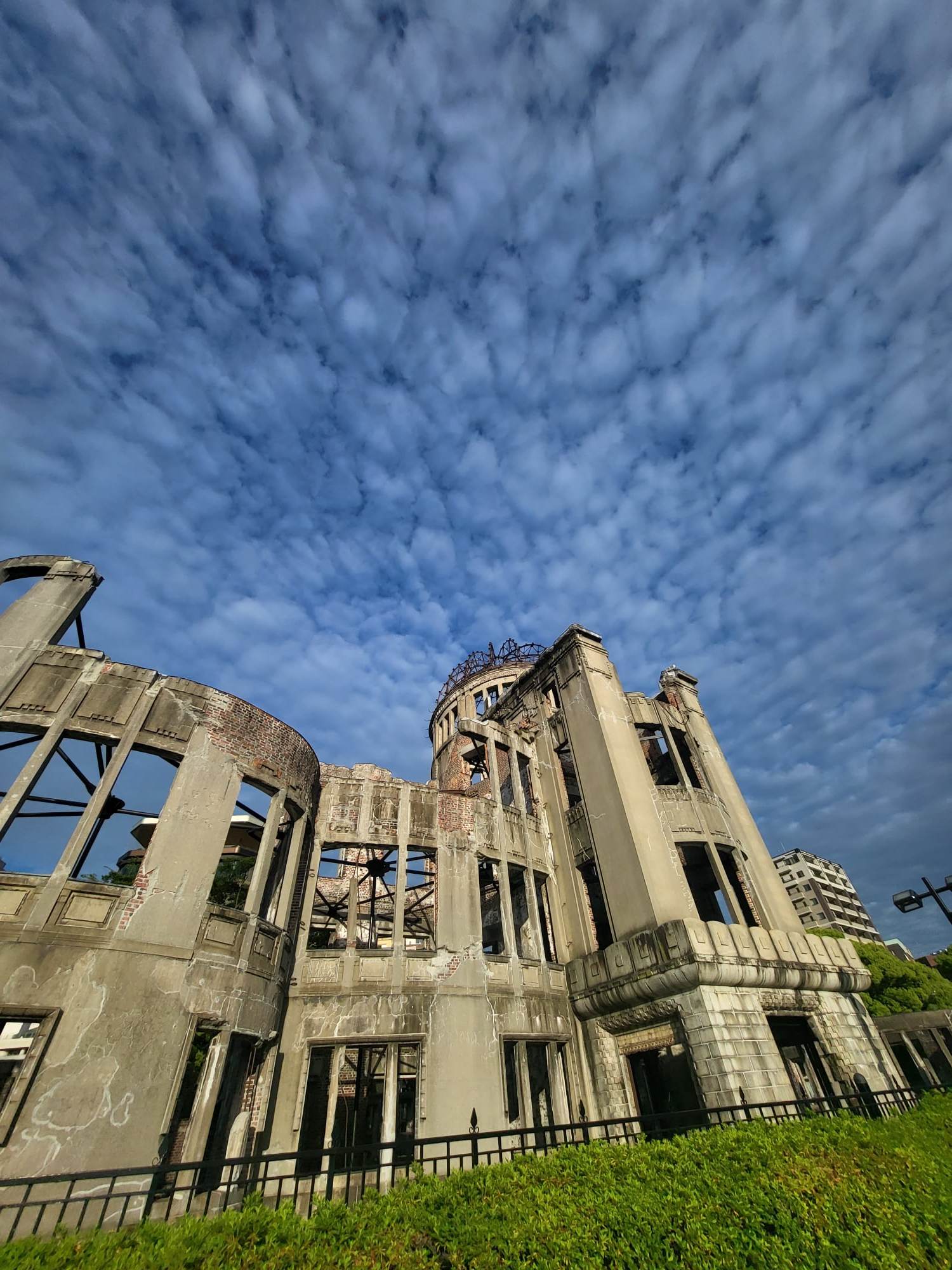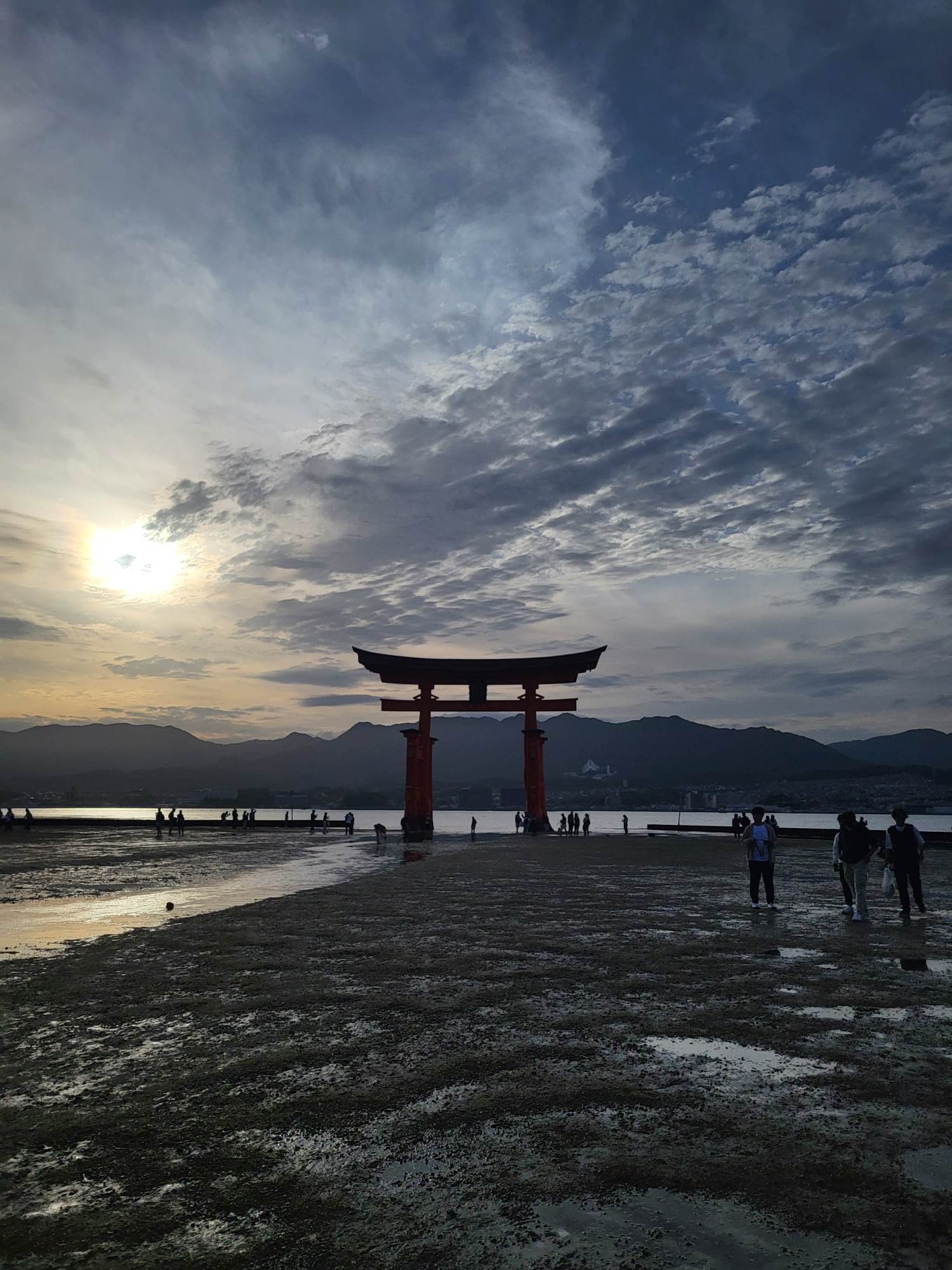
Trip #5 – Hiroshima
My final trip during my study abroad program was to Hiroshima. It is one place with a strong connection with the United States. One of the most popular things in the city is the “Genbaku Dome,” known as a memorial of peace. Thanks to this old building, I understood the consequences of conflict. And I think it is an excellent example for the world to see the damage people can do. We can learn from our history and improve from our ancestors. The “Genbaku Dome” gets tourists from around the world daily. Seeing the diversity of people reading the statues and sharing different opinions was the best because everyone respected each other.
The second place I decided to visit is one of Japan’s most famous “tori” gates. It is located on “Miyajima,” meaning “Shrine Island.” The island is full of history connected to Buddhism and more. And it has one of the most beautiful landscapes I have seen in Japan. During the day, the water is high and full of sea creatures, but when the sun starts going down, the water also decreases, letting people walk close to the gate.

